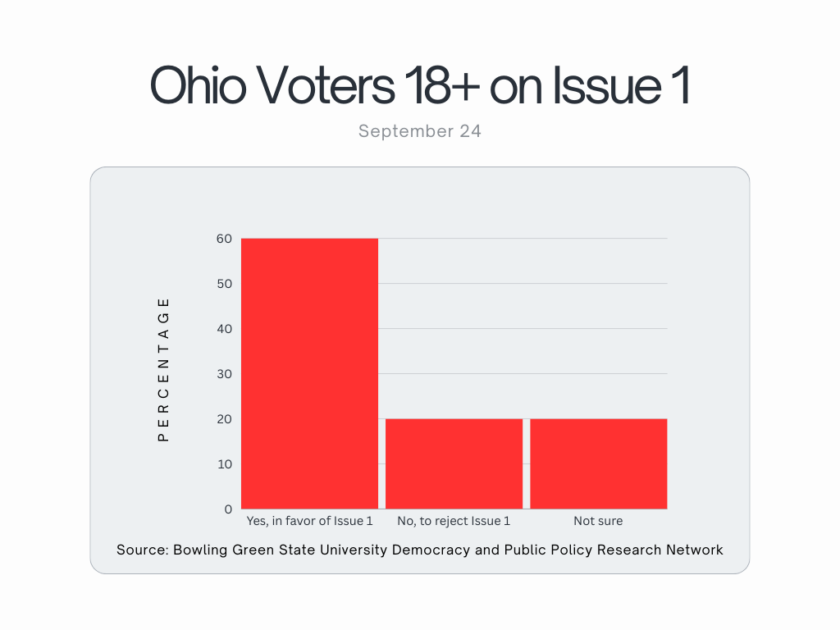Issue One will be present on Ohio voters’ ballots in the upcoming November election.
The proposed amendment seeks to revise the state’s redistricting process, with changes made to how the redistricting commission is structured, as well as rules being set for how legislative districts are drawn.

Issue One proposes that the state’s Ohio Redistricting Commission be replaced by a new fifteen-member Ohio Citizens Redistricting Commission composed of five Democrats, five Republicans and five independents.
Potential candidates to the commission will be screened by a bipartisan panel of four retired judges, “two of whom affiliate with the First Major Party and two of whom affiliate with the Second Major Party.”
Candidates to the commission are to disclose any party affiliations, monetary contributions to political campaigns and additional financial information required by law. Additionally, commissioners are “ineligible to hold elective or appointive state office in Ohio for six years following the certification of the redistricting plan for the general assembly.” Ineligible candidates include current elected officials, former political candidates and registered lobbyists.
The amendment mandates that the commission hold three rounds of public meetings before any redistricting plan is adopted by the state assembly. The initial round of meetings would see the commission hold at least five input hearings across the state to hear from voters about any concerns they may have about the redistricting process.
After the commission has drafted its initial redistricting plan, it is to hold another round of hearings across the state to gather feedback from the public. If there are any subsequent modifications to the plan, at least two more hearings will be held by the commission to gather final voter feedback.
The amendment proposes that, to curtail gerrymandering, “the statewide proportion of districts in each redistricting plan that favors each political party shall correspond closely to the statewide partisan preferences of the voters of Ohio.”
To do this, the amendment proposes that the statewide proportion of districts that favor either major party are to deviate by no more than three percentage points for either side. Any proposed redistricting plan by the commission is to also comply with federal law, including the Voting Rights of Act of 1965.
The amendment comes in the backdrop of an ongoing anti-gerrymandering campaign within the state. Anti-gerrymandering measures were approved in 2015 and 2018, leading to the current Ohio Redistricting Commission.
However, this current redistricting commission is a seven-member panel composed of the governor, auditor and secretary of state, alongside four additional members of the state legislature. Despite the commission’s ostensibly bipartisan nature, its attempt to draw redistricting maps have been mired in controversy, with one proposal being deemed unconstitutional by the Ohio Supreme Court in 2022.
The current ballot language for the proposal was adopted by the state’s ballot board on Sept. 18. However, its adoption was challenged by the organization Citizens Not Politicians, the group that drafted the Issue One proposal, noting that the language used by the ballot board suggested the amendment would revert prior anti-gerrymandering measures and require gerrymandering in the redistricting process.
Citizens Not Politicians filed a lawsuit against the Ohio Ballot Board in response, though the ballot language was largely upheld by the Ohio Supreme Court. Nonetheless, the Court’s conclusion noted that “by leaving unsaid what the proposed amendment would do to preserve rights of public participation through such procedures as public meetings and hearings, we conclude that the ballot board drifted into argumentation.”
Elections will be held on Nov. 5.


